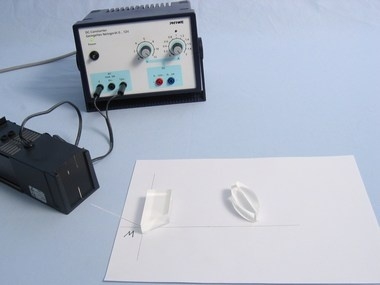
Technical data Complementary coloursArticle no: P1066300  Principle In this experiment, the students first review their knowledge of the dispersion of light by a prism and the reuniting of spectral colours with the aid of a converging lens. The main emphasis of the investigations is one the observation of the secondary colours that arise when individual spectral colours are blocked out of the spectrum. What should be learnt is that the secondary colour (the complementary colour) and the blocked out spectral colour, when recombined, produce white again. As a memory aid for complementary colours, a simple scheme is given which adequately fits the findings. The complete Newton colour circle and the findings of Helmholtz on complementary colours are not gone into here. Benefits
Tasks What are complementary colours? Fade out individual colours of the spectrum from white light and investigate which secondary colours appear. Scope of delivery
| ||||||||||||
Robert-Bosch-Breite 10 – 37079 Göttingen – Germany
www.phywe.com

